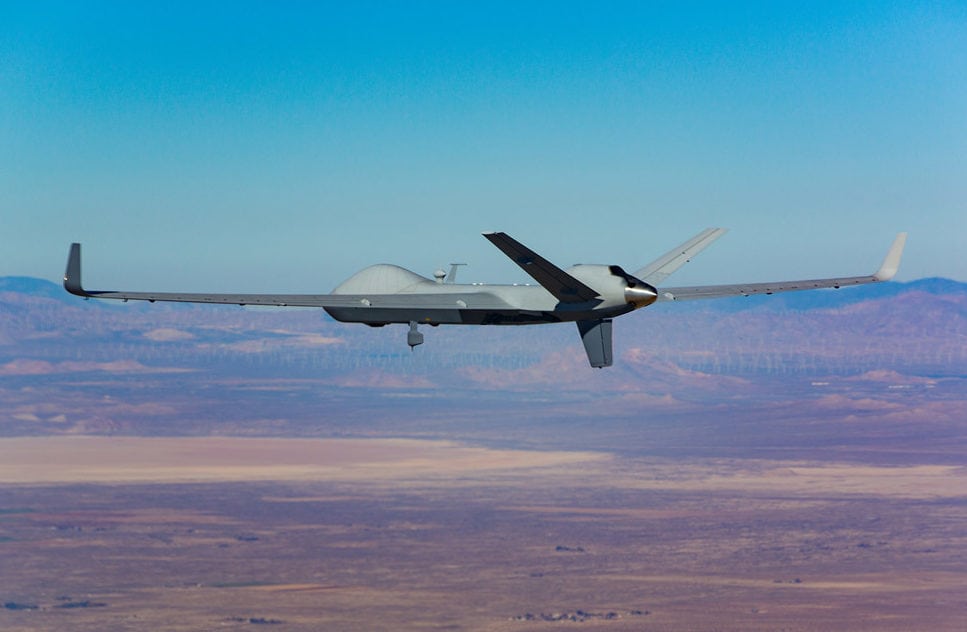
General Atomics’ SkyGuardian, a variant of its type-certifiable Predator B drone. Photo courtesy of General Atomics
Pentagon scientists are trying to beat the cost curve the military likely will encounter in future wars by designing low-cost, expendable unmanned aircraft and munitions that can overwhelm enemy defenses without breaking the bank.
“We need an unmanned, low-cost attritable aircraft,” Jeffrey Stanley, associate deputy assistant secretary of the U.S. Air Force for science, technology and engineering, said.
But the program to develop inexpensive unmanned aircraft itself needs to happen quickly and at a much lower cost than traditional government weapon acquisition programs, Stanley said. He recounted a conversation in which the industry said it could deliver such a vehicle, but said it could take 10 years and $800 million.
The Air Force is now looking at mass producing, including using 3-D-printed parts for between one and three million dollars a pop, Stanley said. With an F-35A fighter running about $100 million a copy, the Air Force cannot afford to lose them to enemy air defenses in large numbers. An MQ-1 Predator unmanned aircraft has a unit cost of about $4 million, but the slow-flying aircraft are extremely vulnerable to sophisticated air defenses. “I’ll never forget that because someone said, ‘I can go buy one right now for $5 million today,’” he said.
“As we go into the future, there’s no reason we should continue to just have high-value assets,” he said. “We’ve got to be able to look at having something that’s attritable. … As we get into the future, there’s no way we can just continue to waste money,” he said. “I’m not saying get rid of the high-value assets, but you need a combination of future weapon systems because we don’t know what the threat is going to be.”
The plan is to reduce the logistics and sustainment tail of the low-cost drones, even 3-D print them in the field, eliminating the need for storage or maintenance facilities, Stanley said.
“There will not be a large depot for these systems. There might not be a depot at all,” he said. “If it doesn’t come back, we don’t really care. This is a whole new way of thinking for the U.S. Air Force.”
David Lambert, chief scientist at the Air Force Research Laboratory Munitions Directorate said it is developing a low-cost multi-purpose munition called Gray Wolf that can be fired in swarms to overwhelm enemy air defenses. Lockheed Martin and Northrop Grumman each hold five-year, $110 million contracts to develop the missile, which Lambert said should eventually cost about $100,000 a copy.
The Gray Wolf program consists of four spiral-development phases that allow for rapid technology prototyping and multiple transition opportunities. This first phase, defined by an Indefinite Delivery/Indefinite Quantity contract, is anticipated to run until late 2019. Initial demonstrations will be from an F-16 aircraft. In addition to the F-16, the system will be designed for compatibility with F-35, F-15, F-18, B-1, B-2 and B-52 aircraft.
The cruise missile has multiple options from decoy to electronic attack to high-explosive warhead at range in a denied environment.
“With that one, cost was put in the equation right up front because if we couldn’t specify what it was going to be, we weren’t going to gain it, we were not going to be a player,” Lambert said.
This was originally published at sister publication Defense Daily.